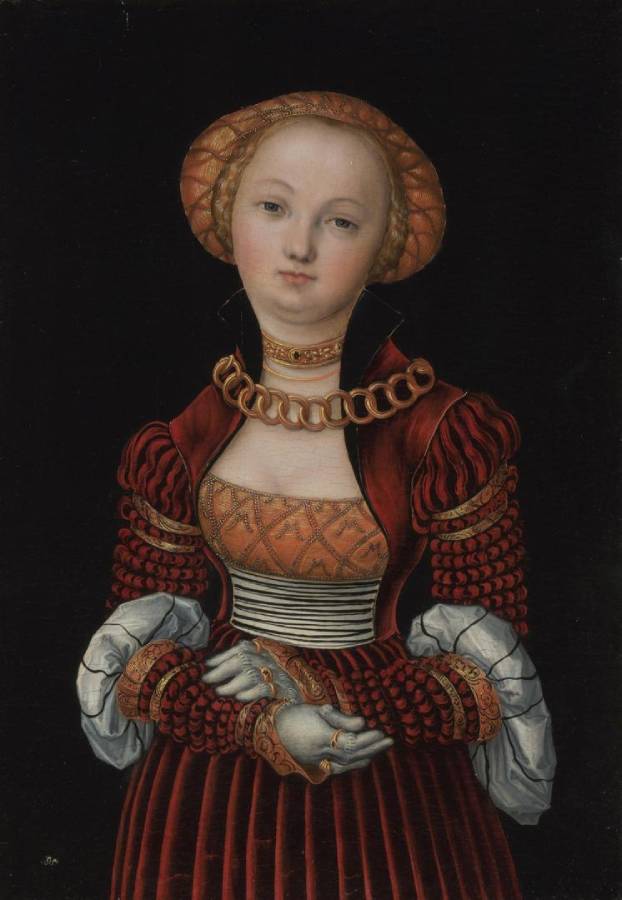Cranach, Lucas the Elder (1472-1553)
Portrait of a Woman
1525–1527
Oil on wood, 35.9 × 25.1 cm
National Gallery, London
Cranach only painted a handful of portraits showing women of the Saxon court during his time as court painter to the electors of Saxony, and this is one of them. The black background contrasts with the woman’s pale complexion, and her red dress draws out the pink blush on her cheeks.
Dressed in the fashion of the sixteenth-century German elite, she wears a red velvet dress and a wealth of jewellery, including heavy gold chokers around her neck, pearls and gold thread on her headdress and an abundance of rings on her fingers. This part of her outfit is physically impossible: the rings under her gloves, just visible through the slashes, are higher up her fingers than the ones over them. Cranach has manipulated reality to emphasise her wealth and beauty.
The letter ‘M’ is embroidered across the woman’s bodice, likely alluding to her name, although she is yet to be identified. Her facial features lack individual characterisation and instead display an idealised beauty, which is emphasised by her low-cut bodice and the high collar that draws attention to the subtle bulge of her breasts. The woman’s body is positioned at a three-quarter turn, but her gaze is directed towards the viewer. The women in Cranach’s portraits of identifiable people generally avert their gaze, keeping their heads in line with their bodies. This woman stares at us with a look of superiority. Cranach often adopted this expression in his portrayal of classical goddesses, such as Venus, or biblical temptresses, such as Eve.
Cranach painted a number of portraits in a similar style to this picture around the year 1525. In this group of pictures, individual female figures wear red velvet dresses and jewellery in the contemporary German style, with their bodies turned at a three-quarter angle and their gaze directed towards the viewer. Although the identities of some of these women are unknown, some are thought to represent women from biblical history, including Mary Magdalene. Depictions of cunning, sensuous nude women were produced frequently in Cranach’s workshop, and the theme of weibermacht (the power of women over men) was particularly popular in Germany in the fifteenth and sixteenth centuries. (NG)
